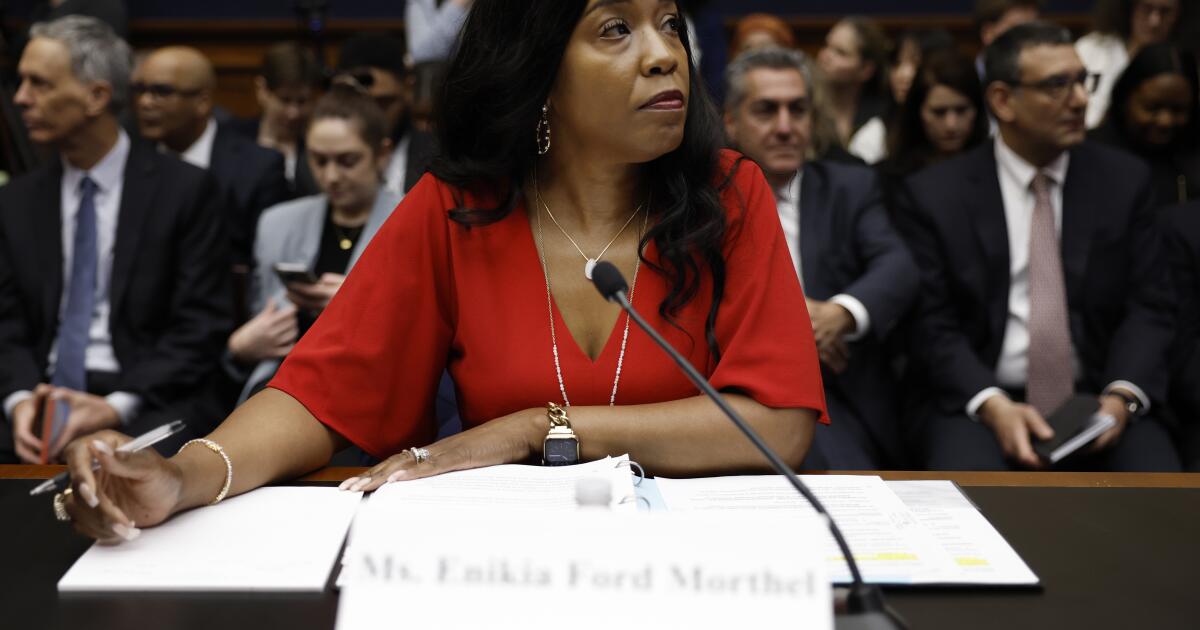Berkeley Unified faces new antisemitism probe by House committee
Pressure over antisemitism allegations against the Berkeley school system intensified Monday with the launch of what members of Congress called a “nationwide investigation of antisemitism in K-12 schools.”
The first three districts to fall under scrutiny of the House Committee on Education and Workforce are the Berkeley Unified School District, Fairfax County Public Schools in Virginia and the School District of Philadelphia.
“The Committee is deeply concerned” that Berkeley Unified is “failing to uphold its obligations” to “end any harassment, eliminate any hostile environment and its effects and prevent any harassment from recurring.”
In a letter sent Monday to Berkeley Unified, the committee cited “numerous press and whistleblower reports” alleging that since the Oct. 7, 2023, Hamas attack against Israel, “Jewish and Israeli students have allegedly been regularly bullied and harassed.”
Letters to the three school districts were signed by Committee Chair Tim Walberg (R-Mich). The letter to Berkeley Unified also was signed by Early Childhood, Elementary, and Secondary Education Subcommittee Chair Kevin Kiley (R-Rocklin).
In addition to recounting allegations, the letters seek information, including:
- A chart of all complaints made against students, faculty or staff related to potential antisemitic incidents.
- All documents relating to walkouts, demonstrations, toolkits, workshops, curricula, course materials, speakers and more referring to Jews, Judaism, Israel, Palestine, Zionism or antisemitism.
- All documents related to contracts or agreements that refer to Jews, Judaism, Israel, Palestine, Zionism or antisemitism.
In a statement the district characterized the allegations as past incidents that had been dealt with.
“Today’s letter from the U.S. House Committee on Education concerns allegations raised almost 18 months ago,” the statement said. “The information sought in the current letter from the Committee concerns those old allegations. The District will, of course, respond appropriately to the Committee’s letter. Our commitment to the safety and well-being of all students in BUSD is unwavering.”
In May 2024, Supt. Enikia Ford Morthel testified in Congress about allegations of antisemitism.
At the time, Ford Morthel said her district had received formal complaints of antisemitism stemming from nine incidents and stressed that district leaders responded quickly to the accusations and launched investigations.
“Our babies sometimes say hurtful things,” she said. “We are mindful that all kids make mistakes. We know that our staff are not immune to missteps either, and we don’t ignore them when they occur,” Ford Morthel said. “However, antisemitism is not pervasive in Berkeley Unified School District.”
It’s difficult to determine from the letter the extent to which the allegations take in new incidents.
One of the most stark allegations is that officials permitted a rally in which some students shouted, “Kill the Jews.” Published reports indicate that such an incident was alleged to have occurred Oct. 18, 2023, more than two years ago.
This week’s letter does not contain dates of incidents, while alluding to an alleged inadequate district response.
In February of 2024, the Louis D. Brandeis Center for Human Rights Under Law and the Anti-Defamation League filed a complaint with the U.S. Department of Education alleging that Berkeley public schools ignored reports of bullying and harassment of Jewish students on the basis of their ethnicity, shared ancestry and national origin. District leaders, it alleged, “knowingly allowed” classrooms and schoolyards to become a “viciously hostile” environment.
That investigation was opened under the Biden administration and it remains active under the Trump administration, which has made alleged antisemitism a highlighted target of the federal enforcement — accompanied by the threat of fines and withdrawal of federal funding.
Berkeley Unified also faces an active U.S. Education Department probe alleging “severe and pervasive anti-Palestinian racism” affecting Palestinian, Arab and Muslim students. This complaint was filed in 2024 by the San Francisco Bay Area chapter of the Council on American–Islamic Relations and American-Arab Anti-Discrimination Committee.
The allegations included that Arab and Muslim students “were taunted as ‘terrorists’ after teachers in class taught lessons referencing ‘terrorism.’”
A Philadelphia school district spokesperson said Monday that it was district policy not to comment on an active investigation.
Officials in Virginia pledged cooperation with the congressional inquiry.
In a statement, Fairfax County school officials noted the request for “information about potential antisemitic incidents occurring … since 2022.” The school system “intends to fully cooperate with Congressman Walberg’s inquiry” and “continues to partner with all families to provide a safe, supportive, and inclusive school environment for all students and staff members.”
